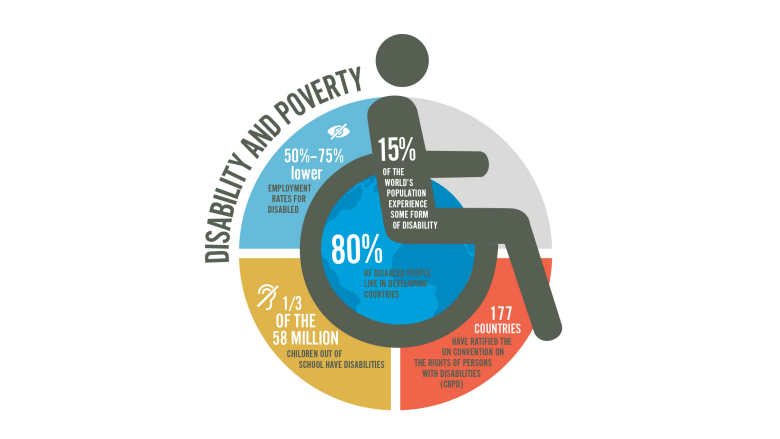Rights of persons with disabilities
There are approximately 1.3 billion people around the world, or 16% of the world’s population, who experience some form of disability.
There are several factors that contribute to the increase in this number, including: human conflicts, destruction due to natural causes, and poverty and unhealthy living conditions, as well as a lack of knowledge about disabilities, and the associated causes, preventions, and treatments.
The internet provides new possibilities for social inclusion and for safeguarding the rights of persons with disabilities.
The main policy framework
In order to maximise the technological possibilities for people with disabilities, there is a need for a robust internet governance and policy framework. The main international instrument in this field is the Convention on the Rights of Persons with Disabilities, adopted by the UN in 2006 and signed by 181 countries (as of December 2019). It establishes rights that are now in the process of or are included in national legislation by the signatories, therefore making these rights enforceable.
The Convention requires states to take the necessary measures to create an enabling environment for persons with disabilities. For instance, it obliges states to:
-
undertake research and development, and promote the availability of accessible technology.
-
promote, develop, and provide access to ICTs, the Internet, and other new technologies, which others normally enjoy, and to do so at an early stage of development so that these technologies and systems become accessible at minimum cost.
-
provide information intended for the general public to persons with disabilities in accessible formats and technologies that are appropriate for different kinds of disabilities in a timely manner and without additional cost.
The Internet Rights and Principles Coalition (IRPC) and the Dynamic Coalition on Accessibility and Disability (DCAD) are both focused on the rights of persons with disabilities. In line with the Convention, the IRPC’s Charter of Human Rights and Principles for the Internet (Section 13) specifies that persons with disabilities have a right to access, on an equal basis with others, to the Internet and that steps must be taken to ensure the availability and effective use of the Internet by people with disabilities.
The DCAD Accessibility Guidelines (2015) – produced during the 10th Internet Governance Forum (IGF) in Brazil, detail steps that should be taken when organising an IGF meeting, such as choosing accessible facilities and using specific tools to make information accessible. While the guidelines may be specific to the IGF, they can also be used and applied in other contexts.
Awareness-raising and other measures
Since a lack of accessibility generally arises due to the gap between the abilities required to use hardware, software, and content, and the available abilities of a person with a disability, there are two main objectives when designing and implementing relevant policy measures:
-
Include accessibility standards in the requirements for the design and development of equipment, software, and content.
-
Foster the availability of accessories in hardware and software that increase or substitute the functional capabilities of the person.
When it comes to content, many web applications still do not comply with accessibility standards due to a lack of awareness or perceived complexity and associated high costs (such perceptions are in fact far from the current reality). International standards in web accessibility are developed by W3C in its Web Accessibility Initiative.
Awareness of the need for technological solutions that include people with disabilities is increasing in part due to the work of organisations that teach and foster support for the disabled community, such as the Global Initiative for Inclusive Information and Communication Technologies (G3ict), the European Disability Forum (EDF), the Internet Society Accessibility Special Interest Group, and the International Center for Disability Resources on the Internet.
In some of their latest work, the G3ict reviews the (positive) state of digital accessibility in the workplace of over 500 organisations in the USA, and how artificial intelligence, automated decision-making, and emerging technologies will impact persons with disabilities.

